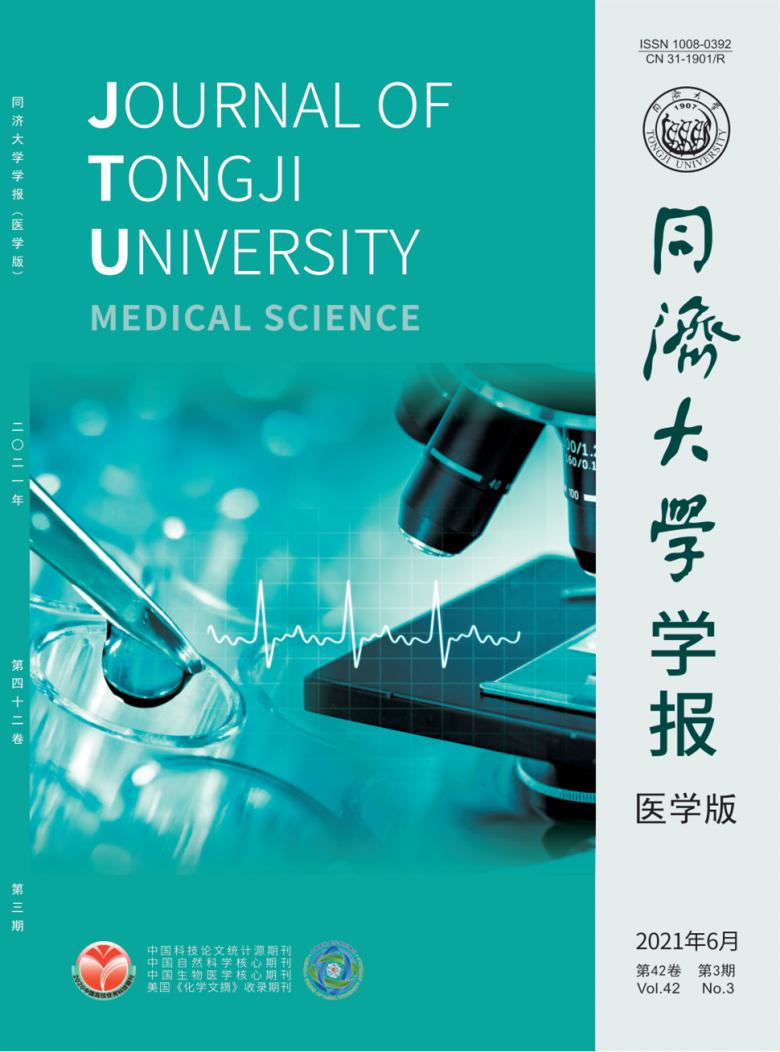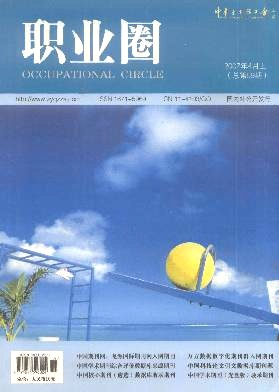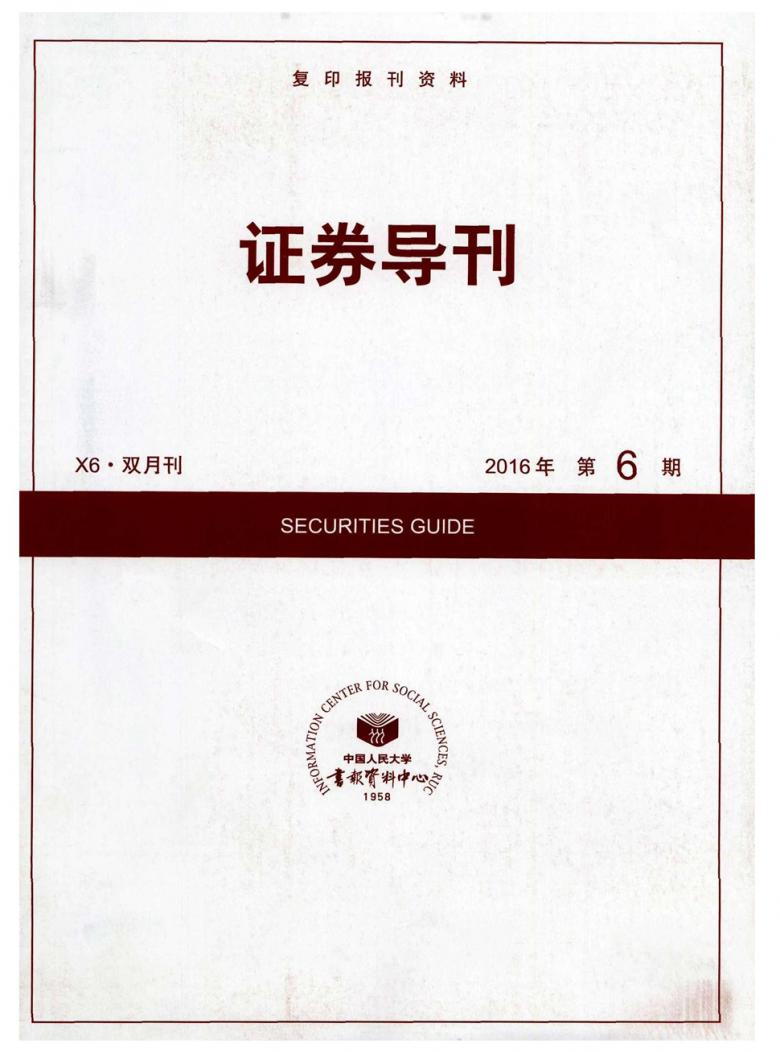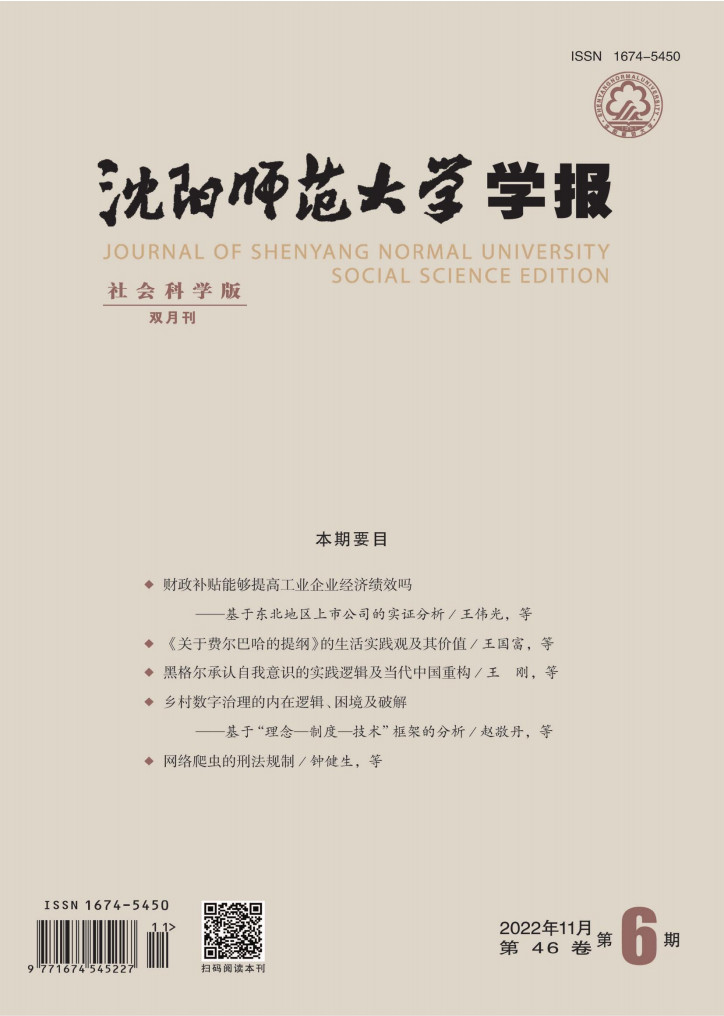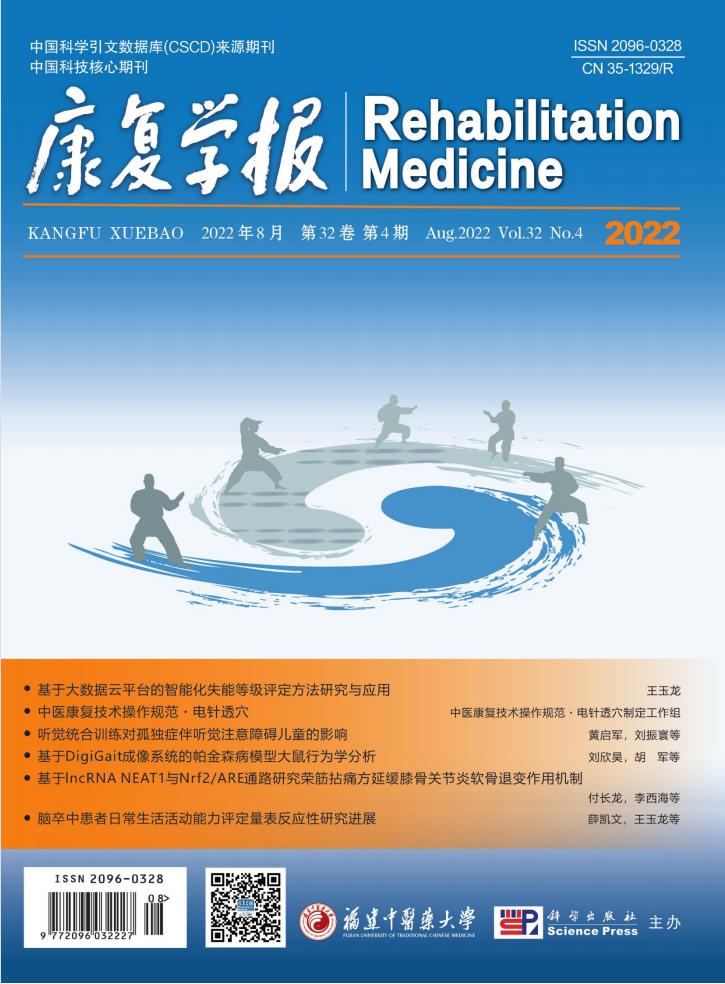关于超高分子量聚乙烯和氧化锆颗粒对兔膝关节周围组织的影响
任天成
【摘要】 目的 观察大颗粒超高分子量聚乙烯(UHMWPE)和氧化锆(zirconia)对兔膝关节周围组织炎症细胞因子表达的差异和组织学改变,并初步探讨其作用机制。方法 日本大耳白兔45只,随机分为UHMWPE颗粒组、氧化锆颗粒组和对照组,每组15只。兔右侧膝关节腔及关节内侧组织分别注入平均直径为58.87 μm 的UHMWPE颗粒混悬液(UHMWPE颗粒组)或氧化锆颗粒混悬液(氧化锆颗粒组),颗粒浓度均为0.1%(V/V);对照组只注入等量无菌磷酸盐缓冲液,其余条件均与UHMWPE颗粒组及氧化锆颗粒组相同。分别于实验第8、16、24周取膝关节周围组织,进行病理组织学检查,ELISA法检测标本组织中IL-1β、IL-6、TNF-α的变化。结果 与对照组相比,UHMWPE颗粒组可见颗粒周围有大量巨噬细胞、多核巨细胞与成纤维细胞包绕,外周形成纤维膜;而在氧化锆颗粒组,第8周时颗粒周围未见巨噬细胞、多核巨细胞和成纤维细胞,第16周开始出现少量上述细胞,第24周时细胞数增加,但仍然少于UHMWPE颗粒组。实验第8、16、24周,UHMWPE颗粒组IL-1β、IL-6、TNF-α的表达均明显高于氧化锆颗粒组和对照组(P<0.05)。氧化锆颗粒组IL-1β、IL-6、TNF-α的表达在第8、16周组时与对照组比较差异无统计学意义(P>0.05),第24周3种细胞因子均明显高于对照组(P<0.05)。结论 在不能被巨噬细胞吞噬的大颗粒中, UHMWPE颗粒的生物活性仍然较氧化锆颗粒强, 由此推测UHMWPE颗粒导致假体周围骨质溶解的反应要强于氧化锆颗粒。 【关键词】 关节假体材料 人工关节 超高分子量聚乙烯 氧化锆 细胞因子 Abstract:Objective To observe the differences between ultra-high molecular weight polyethylene (UHMWPE) and the zirconia particles on the expression of inflammatory cytokines and histological changes of the peripheral tissues of knee joint in rabbits and to make a preliminary probe into the underlying mechanisms.Methods 45 Japanese white rabbits were randomly pided into three groups (n=15 each): UHMWPE particle group, zirconia particle group and control group. Suspension of UHMWPE particles or zirconia particles of 58.87 μm in average diameter at volume percent of 0.1% concentration was injected into the knee joint capsules and the medial tissues on the right side in rabbits. Control group only received the same amount of sterile phosphate buffer under the same condition as UHMWPE group and zirconia particle group. Peripheral tissues of knee joint were examined for pathohistological assessment and ELISA was performed for changes of the three cytokines (IL-1β, IL-6 and TNF-α) at the 8th, 16th and 24th week after particle injection, respectively.Results Compared with the control group, in the UHMWPE particle group, the particles were surrounded by the tunica fibrosa. Optical microscopy indicated that the UHMWPE particles were surrounded by numerous macrophages, multinucleated giant cells and fibroblasts, which formed a tunica fibrosa in the peripheral tissue; while in the zirconia particle group, there were no macrophages, multinucleated giant cells, fibroblasts around zirconia particles at the 8th week after injection, and a scant number of the above cells emerged from the 16th week and the cell count increased at the 24th week but was still lower than in the UHMWPE particle group. The expression levels of IL-1β, IL-6 and TNF-α were in the UHMWPE particle group were markedly higher than in the control and zirconia particle groups (P<0.05) at 8th, 16th and 24th week after injection, but still was less than UHMWPE particle group. The expression levels of IL-1β, IL-6 and TNF-α in the zirconia particle group at 8th week and 16th week had no statistic significance compared with the control group (P>0.05). The levels of inflammatory cytokines of zirconia particle group at 24th week were markedly higher than the control group (P<0.05).Conclusion Of the macroparticles that can not be devoured by macrophages, UHMWPE particles have much stronger biological activity than zirconia particles. Thus an inference might be made that UHMWPE particles are capable of inducing a stronger osteolysis in the peripheral tissue of prosthesis than zirconia particles in conditions with equal particle volume. Key words: materials for joint prosthesis; artificial joint; ultra-high molecular weight polyethylene; zirconia; cytokine 在造成人工关节无菌性松动的诸多因素中,磨损颗粒引起的生物学反应正日益受到重视。磨损颗粒被局部的吞噬细胞,特别是巨噬细胞吞噬后,激活吞噬细胞并释放一系列炎症因子,如IL-1β、IL-6、TNF-α和PGE2等,这些炎症因子又作用于破骨细胞,导致骨质溶解、人工关节假体松动[1-2]。目前应用于人工关节假体的材料有许多种,超高分子量聚乙烯(ultra-high molecular weight polyethylene, UHMWPE)是临床上较为常用的假体材料, 金属对UHMWPE假体,即金属关节头和聚乙烯臼杯相关节,也是当前最流行的假体配伍方式,但是仍然不能避免聚乙烯磨损颗粒的产生[3]。氧化锆(zirconia)为惰性生物陶瓷的一种,在生物体内与组织几乎不发生反应或反应很小,成为人工关节假体的新型材料[4]。临床组织学观察发现,不同材质的颗粒诱发骨溶解的强弱程度不同,在可被巨噬细胞吞噬范围(<12 μm)的颗粒中,以UHMWPE颗粒的生物活性作用最强,且颗粒越小激活巨噬细胞的作用越明显[5],但对不能被吞噬的较大磨损颗粒造成局部生物学反应的差异尚不明了,也缺乏相关实验研究。本实验选择了UHMWPE和氧化锆这2种较大、不能被巨噬细胞吞噬的颗粒,通过对比观察它们引起生物学反应的差异,探讨其可能的原因。 1 材料和方法 1.1 实验动物、材料和分组 日本大耳白兔45只,5~7月龄,雌雄各半,体重2.5~3.0 kg,由徐州医学院实验动物中心提供。UHMWPE颗粒和氧化锆颗粒由中国矿业大学材料研究院提供,经扫描电镜(SEM)检测其形状基本为球形,平均直径为(58.87±6.31) μm。按随机原则将实验动物分为3组:UHMWPE颗粒组、氧化锆颗粒组及对照组,每组15只。每组分别取第8、16、24周3个时间点,每一个时间点每组取实验动物5只进行实验。 1.2 实验方法 参阅有关文献[5-6],将UHMWPE颗粒和氧化锆颗粒用无菌磷酸盐缓冲液(PBS)配成体积分数为0.1%的混悬液。2.5%戊巴比妥钠溶液25 mg·kg-1耳缘静脉麻醉成功后,均选择右侧膝关节,局部备皮消毒,推开髌骨,注入膝关节腔内UHMWPE颗粒(UHMWPE颗粒组)或氧化锆颗粒(氧化锆颗粒组)混悬液2 ml及膝关节内侧组织1 ml,注入后再次局部消毒并按压5 min以防外溢。对照组注入等量的无菌PBS。整个操作过程严格遵循无菌原则。术毕将兔单笼饲养,不制动。 1.3 标本采集与观察指标 术后观察实验动物一般情况、下肢活动及注射部位皮肤的情况。分别于第8、16、24周用空气栓塞法处死动物,立即取膝关节周围组织,置于10%中性甲醛溶液(pH 7.2~7.4),常温下固定24 h。石蜡切片,苏木精-伊红常规染色,光镜下观察兔膝关节周围组织对UHMWPE颗粒和氧化锆颗粒产生的组织学反应。在相同时间取部分膝关节周围组织3 g,用组织剪将其剪碎,加生理盐水3 ml,用匀浆器彻底匀浆,取匀浆液2 ml,以8000 r/min离心10 min,留取上清液1.0 ml,于-80℃下保存。ELISA法检测标本组织中细胞因子,包括IL-1β、IL-6、TNF-α。试剂盒购自碧云天生物工程公司(进口分装),严格按照试剂盒说明的步骤进行操作。 1.4 统计学处理 数据采用±s表示,应用SPSS 11.5统计软件进行数据处理。组间比较采用单因素方差分析(ANOVA),组间两两比较应用q检验。P<0.05为差异有统计学意义。 2 结 果 2.1 病理检查结果 2.1.1 UHMWPE颗粒组 苏木精-伊红染色光镜下表现为:注入UHMWPE颗粒后第8周,可见乳白色的UHMWPE颗粒形状完整,周围包裹少许多核巨细胞和成纤维细胞,未见中性粒细胞和淋巴细胞(图1A)。第16周时, 可见UHMWPE颗粒周围被大量巨噬细胞、多核巨细胞、成纤维细胞所包绕,多核巨细胞数量最多,淋巴细胞极少,未见中性粒细胞(图1B)。第24周时, 这种包裹明显变厚,细胞数量显著增加,外层有纤维组织增生(图1C)。 图1 UHMWPE颗粒组不同时间的病理组织学改变(苏木精-伊红染色,×400) A.第8周;B.第16周;C.第 24周 2.1.2 氧化锆颗粒组 注入氧化锆颗粒后的第8、16、24周,均可见氧化锆颗粒形态基本完整,有断裂的痕迹。第8周时颗粒周围未见到明显的巨噬细胞、多核巨细胞、成纤维细胞及中性粒细胞(图2A)。第16周时,可见氧化锆颗粒周围开始包裹少许巨噬细胞、成纤维细胞,但远较同期UHMWPE颗粒周围包裹的细胞数少(图2B)。到第24周时,可见氧化锆颗粒周围包裹2~3层多核巨细胞、成纤维细胞,外层有少许纤维组织增生(图2C)。 2.1.3 对照组 注入PBS后第8、16和24周,对照组关节周围组织未见UHMWPE颗粒或氧化锆颗粒,未见多核巨细胞、成纤维细胞等(图3 A、B、C)。 图2 氧化锆颗粒组不同时间的病理组织学改变(苏木精-伊红染色,×400) A.第8周;B.第16周;C.第 24周 图3 对照组不同时间的病理组织学改变(苏木精-伊红染色,×100) A.第8周;B.第16周;C.第 24周 2.2 细胞因子的检测结果 注入UHMWPE颗粒后第8、16、24周, IL-1β、IL-6和TNF-α均有明显增高,明显高于同期的氧化锆颗粒组和对照组(P<0.05),且随着时间延长,表达明显增加。氧化锆颗粒组IL-1β、IL-6和TNF-α在第8、16周时表达极低,与对照组相比差异无统计学意义(P>0.05);到第24周时,细胞因子表达比对照组明显增加(P<0.05) 。见表1~3。表1 3组不同时间IL-1β表达水平的比较 与对照组比较:*P<0.05;与氧化锆颗粒组比较:△P<0.05表2 3组不同时间IL-6表达水平的比较 与对照组比较:*P<0.05;与氧化锆颗粒组比较:△P<0.05表3 3组不同时间TNF-α表达水平的比较与对照组比较:*P<0.05;与氧化锆颗粒组比较:△P<0.05 3 讨 论 3.1 UHMWPE颗粒是激活巨噬细胞并促进其释放炎症细胞因子的主要颗粒 临床组织学观察已表明,人工关节假体周围最常见、数量最多的磨损颗粒为UHMWPE颗粒。
[2] Otto M, Kriegsmann J, Gehrke T, et al. Wear particles: key to aseptic prosthetic loosening? [J]. Pathologe, 2006, 27(6):447-460.
[3] Williams S, Schepers A, Isaac G, et al. The 2007 Otto Aufranc Award. Ceramic-on-metal hip arthroplasties: a comparative in vitro and in vivo study [J]. Clin Orthop Relat Res, 2007, 465:23-32.
[4] Fernández-Fairén M, Sala P, Gil FJ. Failures of yttria-stabilised tetragonal zirconia: 52 retrieved ceramic femoral heads of total hip prostheses [J]. Biomed Mater Eng, 2006, 16(6):415-422.
[5] Zysk SP, Gebhard HH, Kalteis T, et al. Particles of all sizes provoke inflammatory responses in vivo [J]. Clin Orthop Relat Res, 2005, (433):258-264.
[6] Zysk SP, Gebhard HH, Pellengahr C, et al. Inflammatory responses to wear particles in vivo: a novel model in the murine knee joint [J]. Orthopade, 2003, 32(4):305-311.
[7] 李 杰,周 兵,郭开今. 淫羊藿总黄酮对人工关节磨损微粒引起单核细胞分泌溶骨性因子的影响[J].徐州医学院学报,2007,27(5):314-316.
[8] Heisel C, Silva M, Schmalzried TP. Bearing surface options for total hip replacement in young patients [J]. Instr Course Lect, 2004, 53:49-65.
